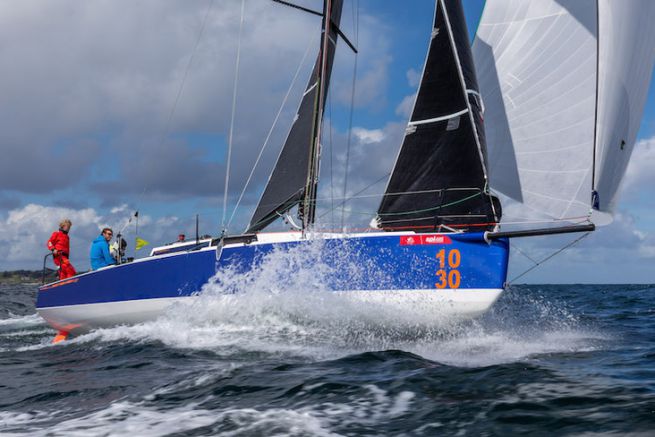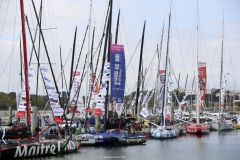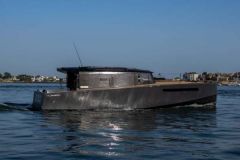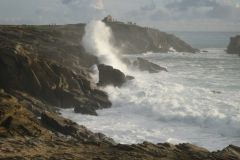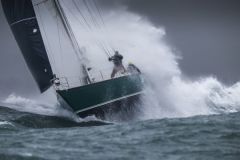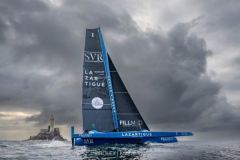Jean Pierre, can you introduce us to JPK10.30??
We did the JPK 10.30 to succeed the JPK 10.10 . The latter has an eloquent track record, his versatility is admirable. So the question was, "how to improve this boat that has won all the formats of courses??
Over time, race formats are evolving towards more doubles and off-shore. There were some ideas in the boxes. During the last Transquadra, I was on a JPK 10.80 and Alex Ozon bananaed me well with his Bepox 9.99. The 10.80 is an excellent boat - versatile between solo and crew - it is already incredible to have such an adaptability. But on a deckchair, facing a boat like the Bepox (ultra specialised for the VMG downwind), it's impossible to match the weight. Sometimes it went 1 knot faster than me when I've never sailed as well (laughs).

So you decided to make a boat to win a transat??
We didn't think we were going to do a Bepox, at the risk of only being able to shine on a deckchair. But we decided to direct our copy more frankly for the double or solo offshore, even if it means losing a little bit of versatility. With the JPK 10.30, we are developing a boat capable of winning these races. Even if it means that he is less comfortable defending his rating on crewed in-shore races.
What are the characteristics that make a good boat off-shore??
In off-shore sailing we often sail at intermediate speeds, it's very different from close upwind and downwind. Reaching and tight dumping require power and lightness if you want to glide, and you want to glide to go fast.
To gain hull power, more volume can be added to the front sections of the hull. The consequence is an increase in the wet surface, so logically more canvas must be used. Or maybe we need to lighten the boat.
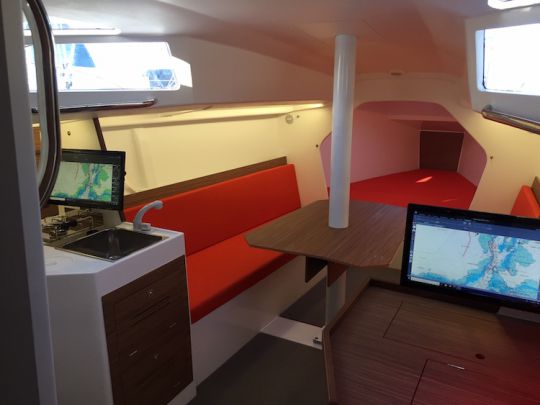
Performance factors are interdependent. The IRC game consists in positioning sliders in the right places, because if you add more canvas, the rating increases and if you lighten the boat, the rating also increases..
To design the JPK10.30, the guiding idea was lightening. However, not much weight could be gained over the already sophisticated construction methods. On the other hand, it was quite easy to gain 300 kg of mass on the keel. In fact, we exchange a little weight stability for a little shape stability and especially by adding ballasts.
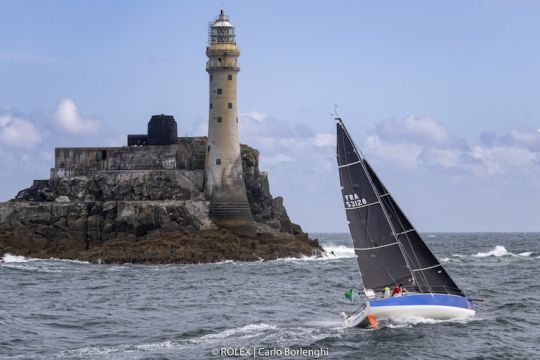
Precisely the ballasts, is it a big nouveauté??
Yes and no, we've been thinking about ballasts for a while now, because the IRC charge is 3 thousandths, which means only 15 seconds per hour.
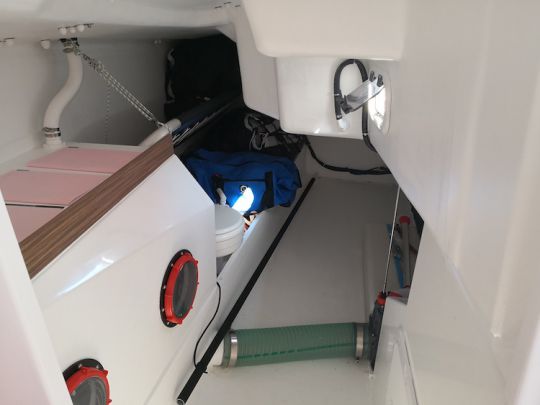
What slowed us down with ballasts (on an IRC boat, light and bulky) is that the sail area must be modest to maintain an interesting rating. Because in IRC, the sail surface quickly explodes the rating. The complexity is to discover the threshold above which the boat must be covered to remain efficient even in light airs.
IRC is as complicated as it is interesting, it's a gymnastics program. The nice thing is that now the IRC allows you to make boats that start going really fast and that's new. On Fasnet with our JPK 10.30, we were going 2 knots faster than the 10.80.
Has JPK10.30 evolved since its lancement??
No fundamental changes, but adjustments. For the first boat, we started a little low on the sail surface. Unfortunately, the pre-season races were all in the pelota and that was not our advantage. But it was interesting for development. On the last 10.30 out, we increased the sail area a little (3m²) and they gained in the light wind in the Mediterranean.

But the rating will increase with the surface of voile??
Indeed, it is necessary to save the rating when the wind increases. But it turns out that the JPK10.30 goes very fast as soon as there is air so it can save its rating. Finally, we can afford to add a few square metres so that it can be as versatile as we wanted.
But for it to work, you have to stay light, which is why we think it will be less comfortable with a full crew.
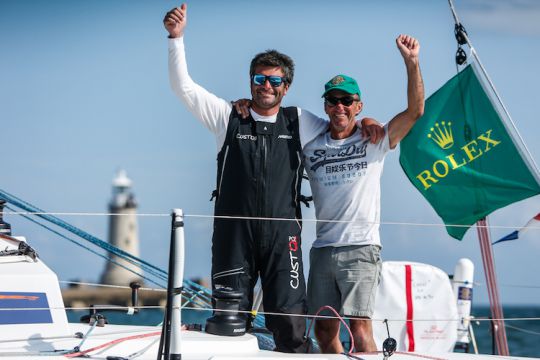
In navigation what do you think of these news lignes??
Despite the front volume, the JPK10.30 works very well at près?! It is impressive in heavy seas and 25kt, we are sailing at 7kt or the speed of a 10.80. As long as the boat is well supported, well managed and fully loaded, we go really fast and without knocking. Where it is dangerous is when the wind drops and there is still sea.
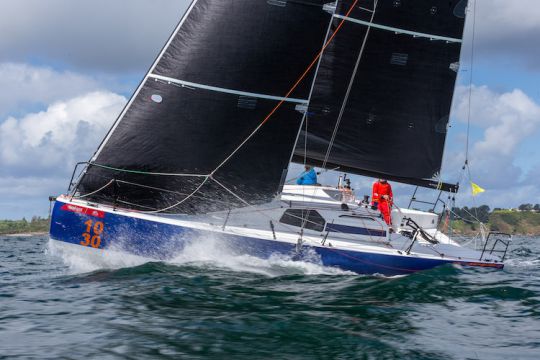
Downwind, Jacques Valer drew the rocker super well. The ratio between the volume of the front, the rear rocker and the curve of the bilge means that when the boat accelerates tightly offshore, it rears up properly, you feel it well set and the helm is light.
What do the first confrontations with the Sun Fast 3300 which shares the same ambitions? give us?
I think we're close enough. On the Fasnet for example, we were neck and neck in light airs while we still had our small mainsail. When the wind picked up while we were still upwind, we were going a little faster. However, on the return leg we were much faster, with regular peaks of 20 knots, we stuck 30 miles to them out of the 120 miles of the race crossing.
How is the launch of this new bateau? going?
We sold about twenty JPK10.30, and for us it's already a lot. We could have sold a lot more, but the delay is sometimes daunting. We currently have the ability to deliver 1 JPK10.30 every 3 weeks. We have production capacity limits related to construction methods.
And having production below demand also creates a form of scarcity and therefore interest. Thus the resale value on the second-hand market is very high.
What really causes me a problem is when I can't provide a very good sailor. But we can't promise a deadline that we couldn't keep.
